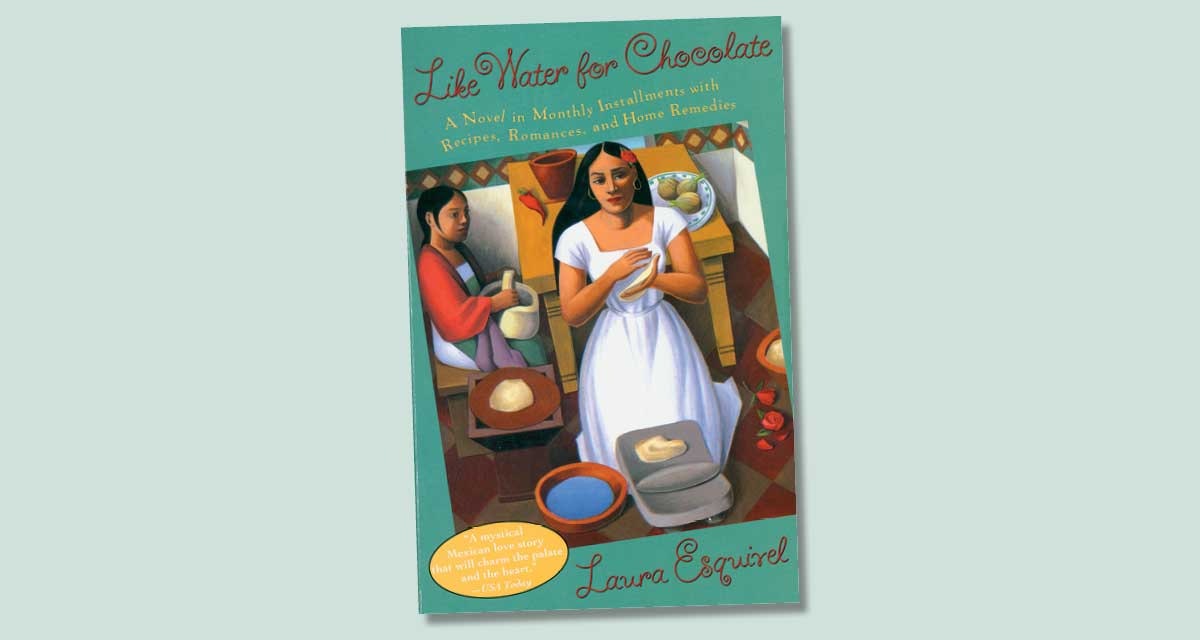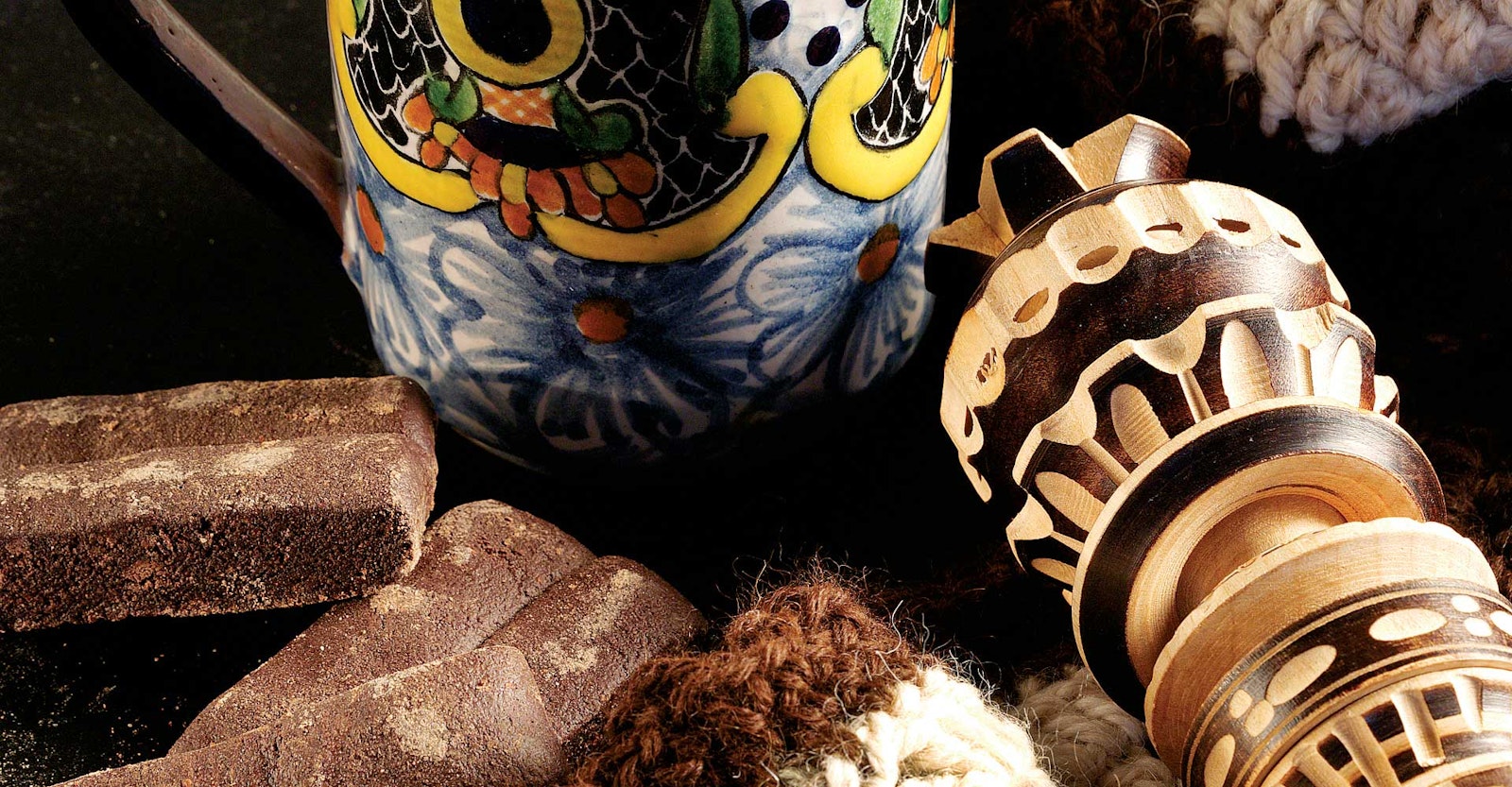In the phantasmal and delicious world of Laura Esquivel’s Like Water for Chocolate (New York: Random House, 1989), we are treated to moments of epic love and epic heartbreak; scenes of a despotic ghost exploding like firecrackers in the night; a decadent rose-petal sauce hot enough to torch buildings; and a crocheted bedspread large enough to cover acres of land.

Cover of Like Water for Chocolate (New York: Random House, 1989), showing Tita in her kitchen. Image courtesy of and used by permission from Random House.
The novel unfolds on the modest La Garza ranch in northern Mexico against the backdrop of the Mexican Revolution (1910–1920) and in the family kitchen, where the widowed matriarch, Mama Elena, reigns over her three daughters with indomitable authority. At the outset, Mama Elena forbids Tita’s marriage to the love of her life, Pedro, because of a family tradition requiring the youngest daughter to care for her mother until the end of her days. She offers her next older daughter, Rosaura, to Pedro as a substitute; he accepts only so he’ll be near Tita, who, upon learning the news, descends into her first chilling heartbreak.
Unlike the rest of the women in her family, who defy traditional gender roles—a sister who becomes a general in Pancho Villa’s army, another sister who is incapable of mothering her own children, and a mother who rules the ranch like a dictator—Tita embraces traditional female household tasks to stay herself against a series of tragedies. She busies herself conjuring up mouthwatering, and often enchanted, dishes as the family cook; nurturing her nephew and niece; embroidering her sister’s wedding sheets; and crocheting what might be perceived as part of her wedding trousseau for a wedding that will never take place.
In a novel in which so many characters and events are marked by overwhelming heat, fire, and sparks, Tita endures an “infinite coldness,” an “overpowering chill,” an “icy feeling of grief.” This “terrible sensation of cold” occurs because she is denied love and the freedom to engage in the passions that will warm her. When Tita and Pedro first talked of marriage, she began to crochet a bedspread. “Tita used any yarn she happened to have in her bedspread, no matter what the color, and it revealed a kaleidoscopic combination of colors, textures, and forms that appeared and disappeared as if by magic. . . .”
As with her scrumptious dishes, the bedspread is another attempt at transforming her sorrow into something useful through the work of her hands. Each time she is forbidden love, the chill becomes unbearable, and she turns to the work of the bedspread to calm herself or seeks it out for warmth and comfort. When Mama Elena forbids her to marry Pedro, she finds the bedspread and begins crocheting again. When Mama Elena forbids her to grieve her nephew’s death—a child whom Tita regarded as her own—and orders Dr. Brown to take her to an insane asylum, she takes her giant bedspread with her. As she grips it in the carriage with Dr. Brown, it drags on the ground like “a huge train of a wedding gown that stretched for a full kilometer.” When her final fiery ecstasy with Pedro is suddenly, but temporarily, extinguished, Tita immediately seeks out the bedspread, which by now is large enough to cover the entire ranch.
The bedspread is ultimately set on fire when Tita, wrapped in it, achieves her final eternal union with Pedro. Its kaleidoscope of color explodes in “glowing sparks” across the ranch and burns for a whole week. At last, Tita is warm. As substitutes for the heat of love, cooking and handwork might be like water for chocolate, but they steady Tita and help her to be free of what denies her love.
Karen Brock was the assistant editor of PieceWork.

